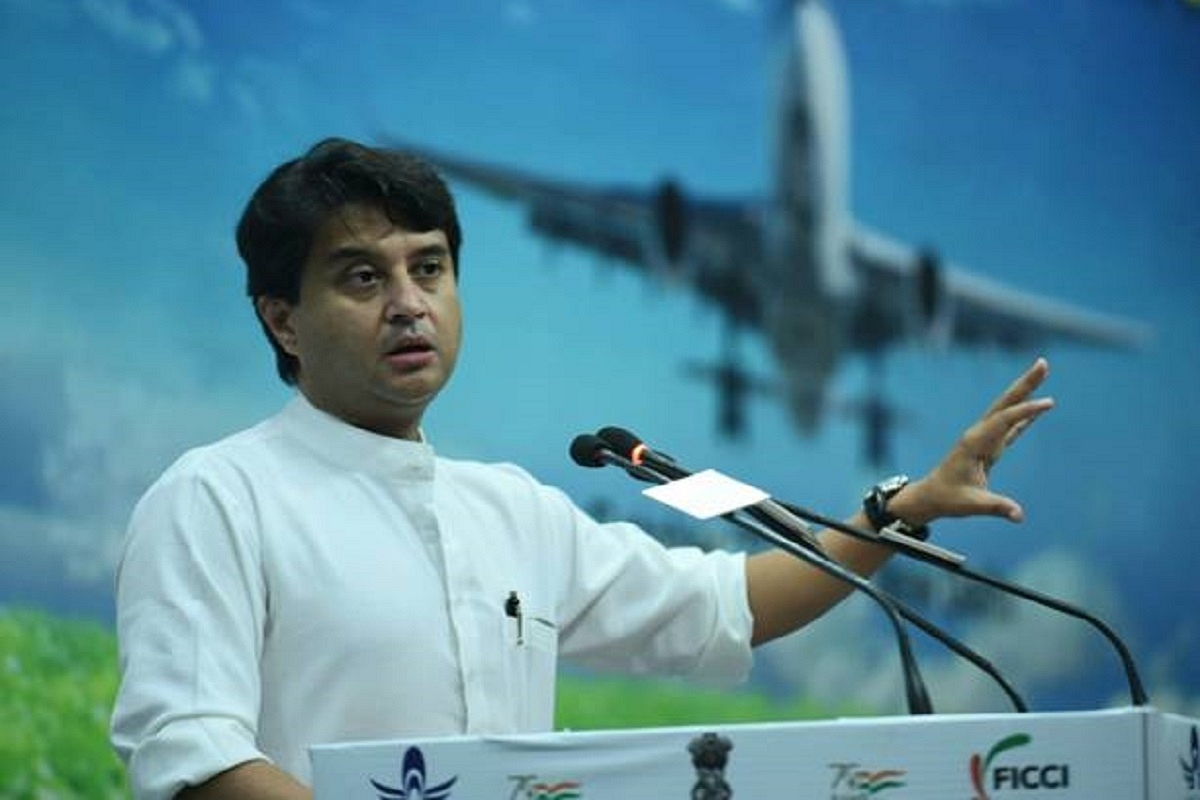Commentary
How India’s Aviation Landscape Is Set To Change in 2023
- The airline industry could see increasing competition and possibly lower airfares if grounded planes can take off, along with new aeroplane additions.
- Fuel, which makes up nearly half of an airline’s cost structure, has been on an upward tear during 2022. However, commodity prices are currently cooling down, which will benefit airlines since it reduces costs and makes tickets cheaper. However, a depreciated rupee still remains a problem for airlines.

Civil Aviation Minister Jyotiraditya Scindia. (PIB)
The Indian aviation sector has been through a turbulent period with several unprecedented events, such as the pandemic, staff shortages, airfare caps, rapid increases in fuel prices, shortages of spare parts, airline mergers and the privatisation of Air India. However, the sector is improving as passenger footfalls continue rising, some level of consolidation, higher airfares due to a shortage of planes, and fuel prices likely headed lower.
Consolidation in the Aviation Sector
One of the most significant developments in the aviation sector was the privatisation of Air India, with the government selling its stake in the carrier to the Tata Group, which already owns Vistara in partnership with Singapore Airlines.
The Tata Group has been working on turning around Air India’s finances and its brand reputation, which had taken a nosedive over the last several years.
Air India still suffers from other legacy issues as well. Its subsidiary, Air India Express, will be merged with Air Asia India, while Vistara will be merged with Air India. Overall, Singapore Airlines will own a 25 per cent stake in Air India post the transaction.
Air India Group will hold a quarter of the domestic aviation market share, making it the second largest player after Indigo Airlines. However, both airlines are unprofitable, so they would require cash injections to keep the show running.
According to Singapore Airlines, the entire group’s net loss would be around $ 1.8 billion, and it would inject around $ 615 million post-merger. Campbell Wilson, the new chief of Air India, was a founder of one of Singapore Airlines’ subsidiaries Scoot.
One of the prominent players in Indian aviation market, Spice Jet, has faced financial, leasing, and safety issues resulting in a significant number of flights being reduced.
Currently, around 2800 planes are in service, which is 400 planes lesser compared to the pre-pandemic times. In part, the decline is due to Spice Jet curtailing flights and other airlines like Indigo grounding planes since Pratt and Whitney haven’t supplied engines due to the supply chain crisis.
The airline industry could see increasing competition and possibly lower airfares if grounded planes can take off, along with new aeroplane additions.
Airports are already struggling with surging crowds, indicating that only capacity might constrain further market growth. Nevertheless, the income statements suggest that the increase in fares hasn’t been enough to cover the costs.
Expansion in Fleet Capacity
Air India plans to add 42 planes to its fleet next year. Reports have suggested that the Air India Group is looking to place orders for 500 planes in both wide-body and narrow-body aircraft segments.
Indigo has sought permission from the Directorate General of Civil Aviation to induct wide-body planes into its fleet to enhance its international services. The largest domestic carrier still has an order book of hundreds of aircraft.
Between the two, Indigo and Tata Group would control nearly 82 per cent of the aviation market.
Costs Could See a Decline or Remain Stable
Fuel, which makes up nearly half of an airline’s cost structure, has been on an upward tear during 2022. However, commodity prices are currently cooling down, which will benefit airlines since it reduces costs and makes tickets cheaper. However, a depreciated rupee still remains a problem for airlines.
Currently, sixteen states have reduced the value-added tax on aviation turbine fuel to make it more affordable for the airline industry. Further, the government is working on adding more airports and improving the aviation infrastructure in the country. The government is targeting to build 220 new airports by 2025, which would offer new routes for airlines. Airports would also be privatised, with 25 airports operated by the Airport Authority of India to be leased between 2022 and 2025.
Introducing ElectionsHQ + 50 Ground Reports Project
The 2024 elections might seem easy to guess, but there are some important questions that shouldn't be missed.
Do freebies still sway voters? Do people prioritise infrastructure when voting? How will Punjab vote?
The answers to these questions provide great insights into where we, as a country, are headed in the years to come.
Swarajya is starting a project with an aim to do 50 solid ground stories and a smart commentary service on WhatsApp, a one-of-a-kind. We'd love your support during this election season.
Click below to contribute.
Latest